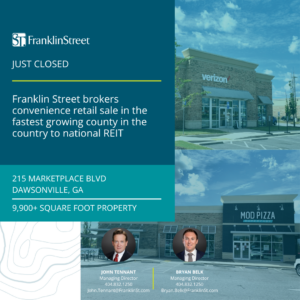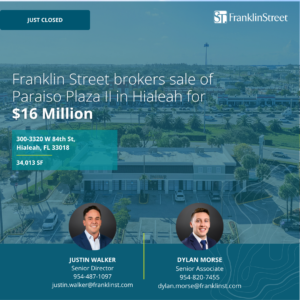Tampa developer Anthony Everett and his partners have walked away from several marquee apartment sites in recent months because the deals just didn’t make financial sense.
The group pulled back from the Tampa Tribune’s site in downtown Tampa, Newport in Westshore and several deals in Orlando.
“Land costs and construction costs have gotten to the point where they’re almost chocking out new development because deals don’t pencil out very well any more,” said Everett, the Central Florida director for Pollack Shores Real Estate Group.
Tampa Bay’s apartment market has led the region’s commercial real estate recovery, creating thousands of construction jobs and spurring millions in capital investment. Two categories of apartments are extremely hot right now: new urban luxury developments that are betting on record-setting rents as well as what’s known in the industry as “value add” deals in which investors buy a property, renovate it and raise rents.
“It’s hard to say we’re not a little over-heated right now,” said Darron Kattan, managing director with Franklin Street in Tampa.
Development costs and purchase prices on older properties that are candidates for renovation are rising which means rents must continue to go up for investors and developers to make a return. Some of the deals are based on projected rents that are so high that some, like Everett, are questioning whether the market is getting close to a peak.
Developers and investors pursuing the most aggressive projects – high-rise apartment towers that need top-of-market rents to make the numbers work – are betting on more than the real estate market. They’re betting that Tampa’s economy will continue to improve and create the type of high-wage jobs necessary to support their developments.
If that doesn’t happen – or even if it happens more slowly than anticipated – demand won’t be able to keep up with the planned supply of apartments. Rents would decrease, which would lower the properties’ values.
But others say economic fundamentals show a continued path to a robust economy. Job and population growth coupled with more millennials and baby boomers renting apartments, support the rising rents.
“Where are we? We’re in the middle of a recover that’s gotten a second wind from continued growth in jobs and wages,” said Byron Moger, an executive director in the multifamily capital markets group with Cushman & Wakefield of Florida Inc. in Tampa.
Pressure at the top
Everett says he got lucky in the last real estate development cycle.
He had sold off his developments and was out of the market by the end of 2006. The market peaked in April 2007.
“It just kind of felt like things were getting crazy,” he said, “and we’re not at that level yet, but we’re kind of headed in the direction that could put us at that level.”
The rental rates some developers are projecting for their projects – especially high-rise urban developments – demand rents of more than $2 per square foot to be profitable. Rents at Crescent Bayshore, which wrapped up construction in late 2014, start at $1,500 a month for the smallest apartments on the lowest floors, but it is one of few properties seeing rents at that level. It’s a trophy asset, in one of the best locations in the city, along Bayshore Boulevard between downtown Tampa and Hyde Park.
Data from Vertica Partners LLC in Tampa shows more than 10,000 potential units – projects in various stages of development, between downtown Tampa, Greater South Tampa and the Westshore area.All of those neighborhoods are prime locations where developers would be chasing top-of-market rents.
What remains to be seen is how much demand there actually is for apartments at that price point. In 2014, 2,844 units were completed throughout the entire region, according to data from CBRE Group Inc.
Net absorption last year was more than 5,200 units, according to CBRE Net absorption measures vacant units that became occupied. The overall market vacancy rate was around 5 percent – which is prime time for new development.
It’s not clear how long the market can continue to perform at that level, with some experts far more optimistic that the boom times will continue. But the sense that the runway is getting shorter is growing.
“Usually you don’t know a peak until you’re six to seven months past it,” Everett said. “By then it’s too late.”
Sean Lance, principal of Vertica Partners, said he sees the overall market as “somewhere in the middle innings,” to use a baseball analogy. But like Everett, he sees potential problems in high-end developments.
“There could be a squeeze at the higher end of the marketplace, potentially,” he said. “No one is sure how deep that pool is.”
Moger points out that the higher rents are for styles of buildings that are new to the Tampa market – smaller units with more upscale amenities that people are willing to pay more for.
“We’ve had no trouble with the absorption of the new properties,” he said.
‘You can’t value-add every deal’
The way Kattan sees it, the value-add market is more frenzied than the luxury development market.
“Every 10-, 20-, 30-year-old complex is being bought with a business model to spend money and raise rents significantly,” Kattan said. “At some point you can’t value add every deal in the entire market. There’s gotta be some lower-priced rents.”
Kattan said he’s seeing so much competition for older properties that prices have been pushed to close to replacement cost, or what it would cost to build the same property today.
That alone is a warning sign that the market is getting overheated, he said. When prices of older properties get that high – and still need millions of dollars of renovations on top of that – the only way to make a return on the investment is to project even higher rents.
Replacement cost for older properties is between $120,000 and $140,000 per unit, depending on the type of construction and location. Several properties in Tampa Bay are starting to trade at numbers close to that.
In early May, one Clearwater property – built in the 1980s – sold for more than $123,000 per apartment.
“That’s a very scary proposition,” he said. “When you look back at any crash 10 years later, you say, ‘Everybody should have seen that,’ and that’s one of those factors that might be looked back upon as ‘Everybody should have seen that.”



